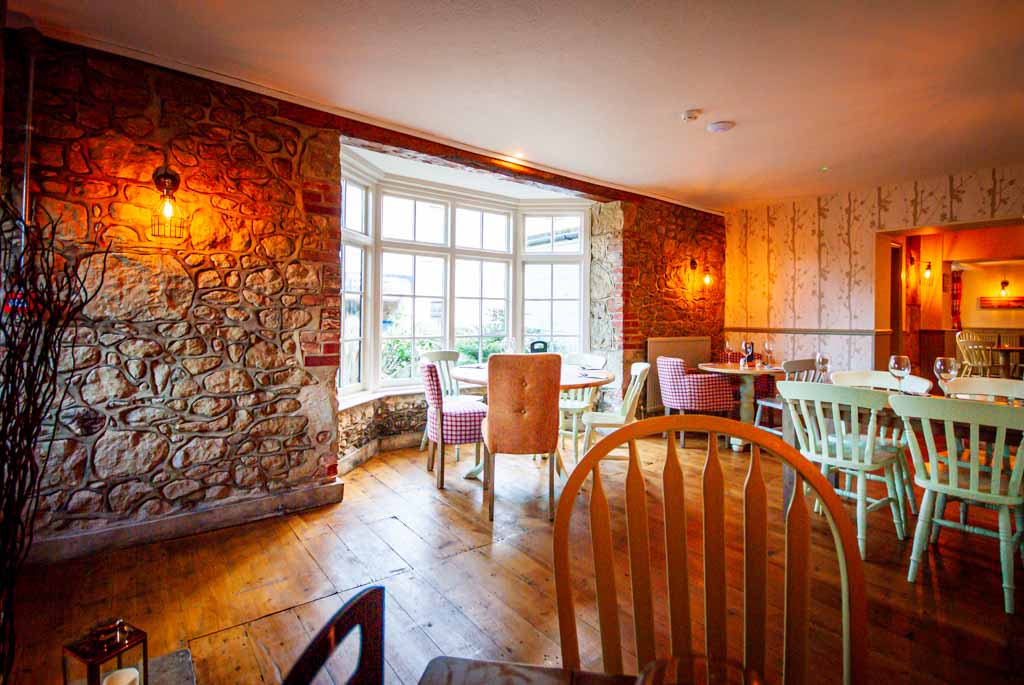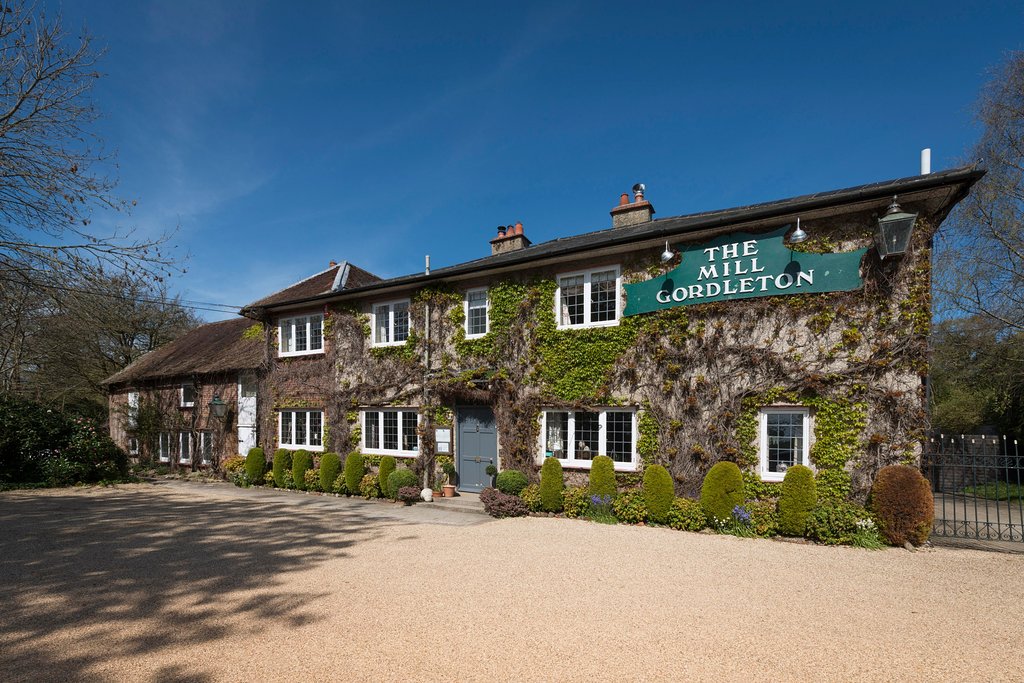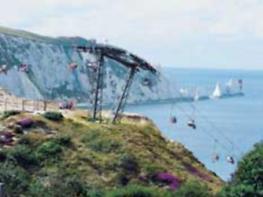Situated on Tapnell Farm with plenty of space to roam, sandy beaches nearby and wonderful sea…
Downlands to Brighstone

From the downland above Brighstone to the wild and beautiful shore.
8.6 miles (13.8kms)
About the walk
The heart of old Brighstone is one of the prettiest village scenes on the island, full of old-world charm with thatched goldenstone cottages, tea gardens and a fine Norman church. It is tucked under the downland ridge in the centre of the southwest coastal shelf, less than a mile (1.6km) from the coast, and the surrounding countryside is perfect for walking. In fact, the varied nature of the landscape here is a microcosm of the island as a whole. Stroll south through the fields and you are on the wild and beautiful shore, with miles of sand and rock ledges. Go north on to Brighstone Down, and you reach the largest area of forest on the island, dotted with Bronze Age and Neolithic burial mounds.
Smuggling history
A sense of history pervades Brighstone. At its tiny museum, you will discover its notorious past. From the 13th century to the late 1800s, Brighstone was a smuggling village, with many locals involved in wrecking and contraband. Good money could be earned salvaging cargoes and timbers from ships wrecked along the coast, and it was common for local children to seek credit from the Brighstone shopkeeper by promising ‘Mother will pay next shipwreck’. It was not until the 1860s that the first lifeboats were launched from Brighstone and Brook. Reverend McCall aroused residents’ consciences to Christian compassion for shipwrecked mariners, local benefactor Charles Seeley provided the finance and reformed smuggler James Buckett, having served five years’ compulsory service in the navy as punishment for his crimes, became the first coxwain of the Brighstone lifeboat.
Three of Brighstone’s rectors became bishops. Thomas Ken was rector in 1667 and wrote the hymn ‘Glory to thee, my God this night’ before becoming Bishop of Bath and Wells. Samuel Wilberforce was rector here for ten years, founding the library and school, before being appointed Bishop of Winchester. Finally, George Moberly later became Bishop of Salisbury.
Walk directions
From the car park, turn left along the A3055 to a stile on the right, waymarked ‘Hamstead Trail’, and walk across the field to a track. Keep ahead beside cottages and maintain this direction along a hedged path and then a field. On reaching a crossing of tracks continue heading uphill on a metalled track. Bear left then right around Dunsbury Farm to a T-junction.
Follow the road as it rises by the farmhouse to the brow and turn left up a track signed to ‘Brook Down (BS49)’. At the junction of tracks turn right beneath telephone wires and pass through a gate and onto Brook Down. Go through a gate and continue to climb, shortly bearing right onto a heavily rutted track to follow the track downhill beside a line of electricity poles. Keep right at a chalk track, go through a gate, to leave Brook Down, and cross the B3399 to a gate and bridleway, signed to ‘Carisbrooke’.
Climb steadily along the main Tennyson Trail across the downland to a gate on the top of Mottistone Down. Just before the gate, pause and take in the view from the early Bronze Age barrows in the enclosures on the left of the track. Descend to the car park and turn right along the lane. After a few paces turn left along a stony track.
Follow the Tennyson Trail uphill beside Brighstone Forest. After passing a fork on the left, at the second junction of paths (opposite a fingerpost), take the bridleway right through a gate and descend Limerstone Down on a gorseedged path with superb views. Ignore turnings left and right, and pass through a gate, ignoring the shady avenue of trees on the right. Then, just beyond a gate, turn right onto a grassy bridleway for Brighstone.
Head downhill through bracken and join a sandy path between trees to Brighstone. Cross the lane, walk down North Street, passing the village museum, to the B3399. Turn left, then right beside The Three Bishops pub into Warnes Lane.
Keep left of the car park, passing the school playing field, along a metalled path to a road. Turn right, then left with a waymarker and cross a footbridge. Keep to the left-hand edge of the playing field and to the rear of gardens to a lane. Cross straight over the lane and follow the fenced path to Chilton Lane.
Turn left, pass Chilton Farm and keep ahead at the sharp right-hand bend along a gravel track, passing holiday huts to the A3055. Pass through the car park opposite and follow the path to the coast. Turn right along the coast path, at the steps and soon cross a stile onto National Trust land (Sud Moor). Keep to the coast path, passing through three kissing gates to reach Brookgreen. Bear right beside the Chine and cottages, cross the bridge and turn left across the field to the car park.
Additional information
Field and clifftop paths, woodland tracks, 2 stiles
Farmland, chalk downland, woodland and coastal scenery
Off lead on Mottistone Down, otherwise keep under control
OS Explorer OL29 Isle of Wight
Pay-and-display National Trust car park at Brook Chine
Brighstone
WALKING IN SAFETY
Read our tips to look after yourself and the environment when following this walk.
Find out more
Also in the area
About the area
Discover Isle of Wight
There’s a timeless quality to the Isle of Wight. For many it embodies the spirit and atmosphere of English seaside holidays. Small and intimate – at just 23 miles by 13 miles – it’s a great place to get away from it all. And with its mild climate, long hours of sunshine and colourful architecture, it has something of a continental flavour.
Explore the island’s varied coastline at any time of the year using the well-established Coast Path. Even in the depths of winter, the weather conditions are often favourable for walking. The island has more than 500 miles of public rights of way in all. There are numerous other things to do too. You could plan a week’s itinerary and not set foot on the beach. The island’s history is fascinating and it was long considered as a convenient stepping stone for the French in their plan to invade the UK mainland. Various fortifications – including Fort Victoria, Carisbrooke Castle and Yarmouth Castle – reflect its key strategic role in the defence of our coastline.
Nearby stays
Restaurants and Pubs
Nearby experiences
Recommended things to do
Why choose Rated Trips?
Your trusted guide to rated places across the UK
The best coverage
Discover more than 15,000 professionally rated places to stay, eat and visit from across the UK and Ireland.
Quality assured
Choose a place to stay safe in the knowledge that it has been expertly assessed by trained assessors.
Plan your next trip
Search by location or the type of place you're visiting to find your next ideal holiday experience.
Travel inspiration
Read our articles, city guides and recommended things to do for inspiration. We're here to help you explore the UK.













